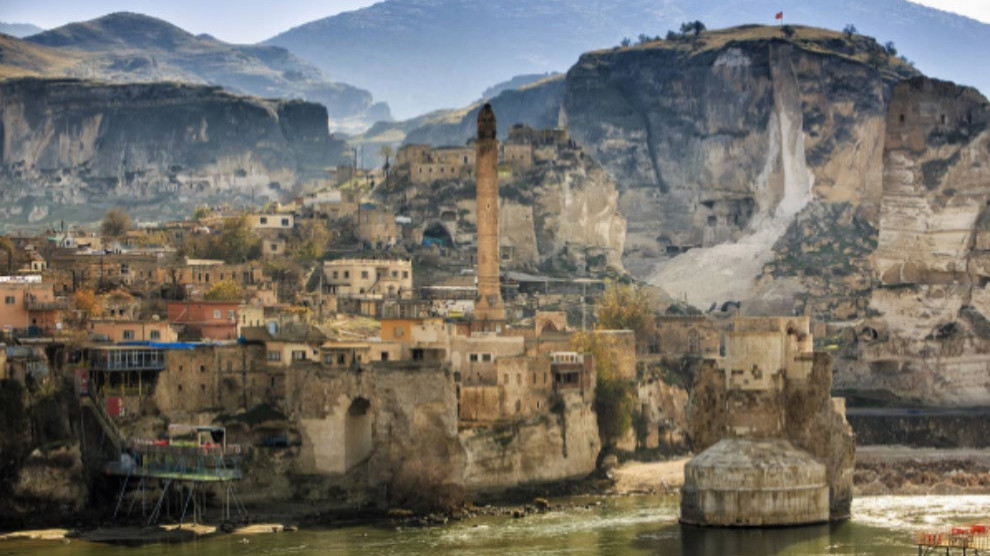Urgent call for Hasankeyf and the Tigris Valley
It is possible to save the 12,000 year old Hasankeyf and the Tigris Valley, which gave and gives life to all of us, says the Hasankeyf Coordination.
It is possible to save the 12,000 year old Hasankeyf and the Tigris Valley, which gave and gives life to all of us, says the Hasankeyf Coordination.

The Hasankeyf Coordination, founded on 5th July 2019 as an umbrella for all fighting the Ilisu Dam, released a statement calling for urgent action for Hasankeyf and the Tigris Valley.
The statement reads as follows;
“The Turkish government aims to destroy the 12,000 year old town Hasankeyf and the entire Tigris Valley through the Ilisu Dam project, which only has an economic lifespan of 50 years. We would like to borrow the sentence of a Roman poet "De te fabula narratur" (What is told is your story) and transform it into "What is set to be destroyed is your history". A site where you can find the footprints of many people of this world is threatened with extinction. The cry rising from Hasankeyf and the Tigris Valley is growing daily.
The open air museum of Hasankeyf exhibits the first traces of humans from 300,000 years ago, and of the first human settlements from 12,000 years ago. Hasankeyf is the only historical site in Anatolia and Upper Mesopotamia which could be entirely preserved in its integrity. Hosting at least 24 cultures in its past, Hasankeyf is one of the most distinct examples of how humans transitioned to settled life.
We do not and will not be able to know much about the past of the Tigris River which itself is a living being, and which has created life in its valley for millions of years, but the life created by the waters of the Tigris River is facing inundation by its own waters. The Ilisu Dam, which has been constructed at the Tigris River over the last years, initiated the filling of the dam reservoir in July 2019. If filled completely, aside from Hasankeyf, it would bury 289 archaeological sites, of which only 20 have been excavated partly, 199 villages fully or partly, and the habitat of at least 100 endemic and threatened species. The climate of the region would be affected as well. We, as campaigners and affected people, do not really know the dimension of the cultural and natural heritage.
With its 550 monuments and 5,500 human-made caves determined up to date, Hasankeyf was selected as one of the 7 most endangered cultural heritage sites by Europa Nostra in 2016. Although Hasankeyf has been put under conservation according to Turkish law, no serious effort has been made by the officials to conserve it for the following generations. The former director of the German Archaeology Institute, Prof. Adolf Hoffman, has stated that despite excavations done since 1986 only around 10% of the site of Hasankeyf has been excavated and analyzed.
It is not too late to save the Tigris Valley, home to millions of living beings, from impoundment and destruction as an ecosystem. While some destruction has occurred recently, there is much more culture, nature and social structure in the Tigris Valley which could be defended. It is not too late to save 400 kilometers of riverine habitat and all the millions of life existing in this outstanding ecosystem. It is not too late to save 200 settlement sites with a population of up to 80,000 people and their unique ways of life. It is not too late to save the Mesopotamian Marshes in South Iraq, the biggest wetlands of the Middle East.
We would like to thank in advance all those supporting and spreading the urgent cry of Hasankeyf and the Tigris River on behalf of the natural and cultural heritage created over thousands and millions of years in the magnificent Tigris Valley.
It is possible to save the 12,000 year old Hasankeyf and the Tigris Valley, which gave and gives life to all of us.
We call upon on everybody to stand for Hasankeyf and the Tigris Valley immediately. Now and not later, it is urgent to act!”